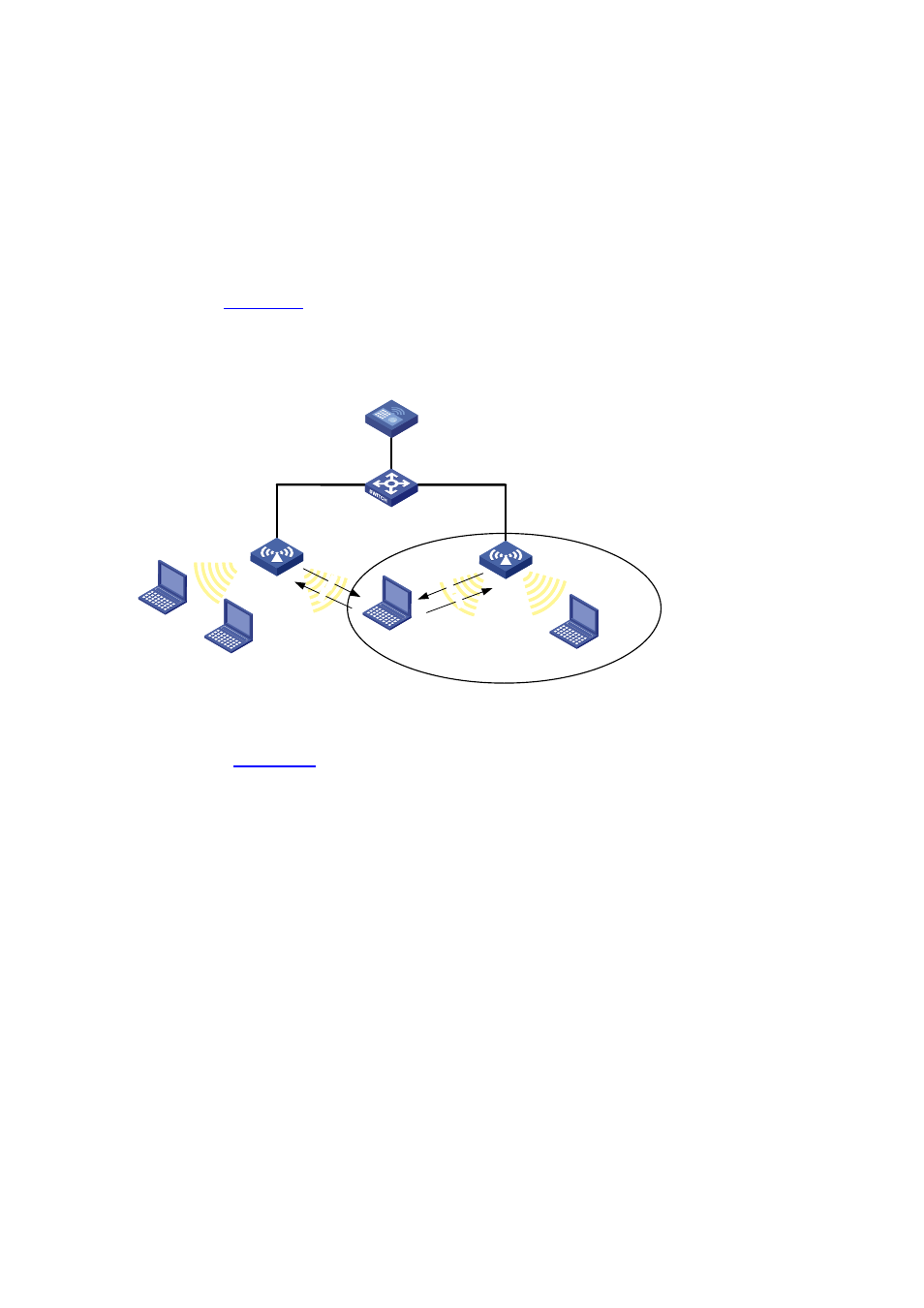Wlan load balancing, Requirement of wlan load-balancing implementation – H3C Technologies H3C WX6000 Series Access Controllers User Manual
Page 579

49-4
WLAN Load Balancing
WLAN load balancing dynamically adjusts loads among APs to ensure adequate bandwidth for clients.
It is mainly used in high-density WLAN networks.
An AC balances load during the association of a client. It checks whether the load on the AP with which
the client is attempting to connect reaches the upper limit. If not, the association request is accepted.
Otherwise, load balancing is carried out depending on the configuration. As the result of load balancing,
the current association request might be accepted or rejected.
As shown in
, Client LB is trying to connect with AP 1. When AP 1’s load reaches the upper
limit, Client LB is connected with AP 2.
Figure 49-3 Network diagram for load balancing
AC
AP 1
L2 switch
AP 2
Excessive
clients are
connecting to
AP 1.
1
2
Client
4
3
Client
Client LB
Requirement of WLAN load-balancing implementation
As shown in
, Client 6 wants to associate with AP 3. Because AP 3 has reached its
maximum load, it rejects the association request. After that, Client 6 tries to associate with AP 1 or AP 2,
but it cannot receive signals from these two APs, so it has to resend an association request to AP 3.
Therefore, to implement load-balancing, the APs should be associated with the same AC, and the
clients can find the APs.